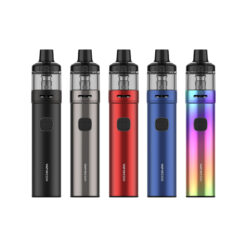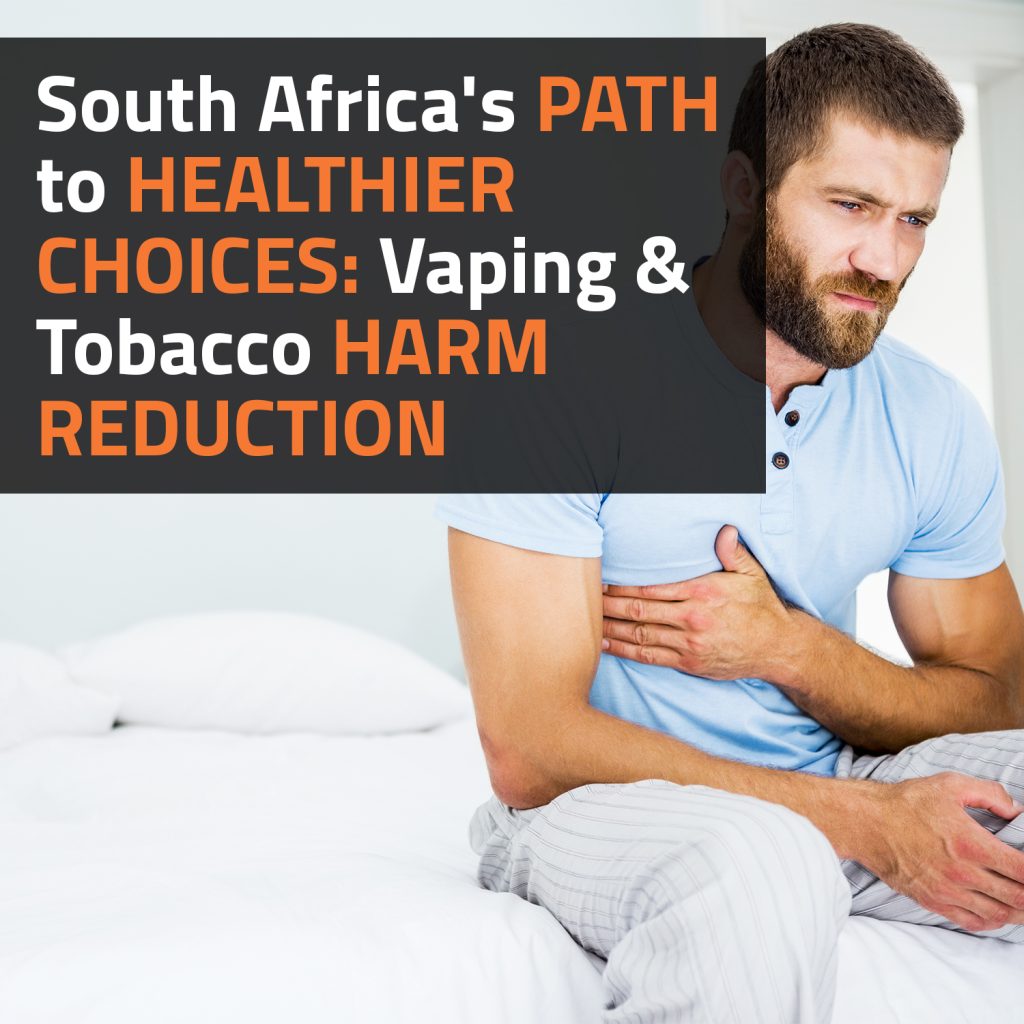Tobacco consumption has long been a global health concern, and South Africa is no exception. With smoking-related illnesses taking a significant toll on public health, the search for safer alternatives has intensified.
Understanding Vaping And Tobacco Harm Reduction
Vaping involves inhaling a vapour created by heating e-liquid or vape juice inside an electronic device, commonly known as an e-cigarette. Unlike traditional smoking, which involves the combustion of tobacco and the inhalation of smoke, vaping produces an aerosol that users inhale. This fundamental difference means that vaping eliminates many of the harmful by-products associated with burning tobacco.
What Is Tobacco Harm Reduction, And Why Is It Important?
Tobacco harm reduction is a public health strategy that aims to reduce the harm caused by tobacco use without necessarily requiring users to quit nicotine altogether. This approach acknowledges that quitting smoking can be extremely challenging for many individuals and seeks to provide them with alternative, less harmful options. Reducing harm involves minimising exposure to harmful chemicals found in tobacco smoke.
Traditional tobacco smoking is linked to a myriad of health risks, including lung cancer, heart disease, stroke, and respiratory illnesses like chronic obstructive pulmonary disease (COPD). The combustion of tobacco produces over 7,000 chemicals, many of which are carcinogenic and toxic. This extensive list of health risks underscores the urgent need for alternatives to traditional smoking.
Tobacco harm reduction strategies seek to minimise health risks by offering alternative nicotine delivery methods that do not involve combustion. These methods include nicotine replacement therapies (NRTs) and non-combustible products like e-cigarettes. By reducing the exposure to harmful chemicals, harm reduction strategies aim to improve public health outcomes and help smokers transition to less risky alternatives.
Vaping Regulation In South Africa
South Africa implemented regulations governing vaping products. These regulations primarily addressed issues such as product safety, labelling, and advertising restrictions.
In South Africa, the sale and use of vaping products were generally legal for adults. However, it’s crucial to verify the current legal status, age restrictions, and any updates to vaping regulations to ensure compliance with the law.
Health Implications Of Vaping
The scientific consensus on vaping is that it is less harmful than traditional smoking. However, it’s not without risks. Vaping is associated with potential respiratory and cardiovascular effects, although these risks appear to be substantially lower than those associated with smoking. Long-term studies are ongoing to assess the full spectrum of health effects.
Vaping can potentially affect the respiratory system, primarily due to inhaling aerosolized substances. Some users have reported irritation or bronchial symptoms, but the severity and prevalence of these effects vary. Compared to the extensive harm caused by smoking, these potential respiratory effects are relatively minor.
While vaping may have some cardiovascular effects, such as increased heart rate, these effects are generally less pronounced than those associated with smoking. Research suggests that switching from smoking to vaping can lead to significant improvements in cardiovascular health for smokers.
South African health authorities have expressed concerns about the potential risks associated with vaping, particularly among youth. They often advocate for stringent regulations and education campaigns to ensure that vaping remains a tool for harm reduction rather than a gateway to smoking.
Tobacco Harm Reduction Strategies
Tobacco harm reduction encompasses various strategies, including:
- Nicotine Replacement Therapies (NRTs): These include nicotine gum, patches, and lozenges, which provide a controlled dose of nicotine to reduce cravings and withdrawal symptoms.
- Behavioural Interventions and Counselling: Behavioural support, such as counselling and therapy, plays a crucial role in helping individuals quit smoking by addressing psychological aspects of addiction.
- Public Awareness Campaigns: The South African government and public health organisations launched awareness campaigns to educate the public about the risks of smoking and the potential benefits of harm reduction methods like vaping.
- Regulations and Taxation: South Africa implemented regulations aimed at reducing smoking rates, such as increased taxation on tobacco products and restrictions on smoking in public places. These measures were part of a broader harm reduction strategy to discourage smoking.
- Access to Smoking Cessation Services: Various healthcare facilities and organisations offered smoking cessation programs, providing resources and guidance to individuals trying to quit smoking through harm reduction methods.
Vaping offers a unique harm reduction option by delivering nicotine without the combustion of tobacco. Compared to NRTs, vaping provides a similar hand-to-mouth action and sensory experience as smoking, which can be more appealing to some smokers attempting to quit.
Many studies suggest that vaping can be an effective smoking cessation tool when used as intended. Smokers who switch to vaping may experience reductions in smoking-related health risks and improved overall health. However, individual success may vary, and support from healthcare professionals can enhance cessation outcomes.
South Africa’s Views And Perspectives
In South Africa, the perception of vaping as a smoking alternative varies. Some view it as a valuable harm reduction tool, while others express concerns about its safety and potential risks, particularly for youth.
Are Vaping Products Widely Used In South Africa?
Vaping products have gained popularity in South Africa, with a growing number of vape shops and users. The industry has seen significant growth, with vape shops offering a diverse range of vaping devices, e-liquids, and accessories. Vaping has attracted a dedicated following among former smokers seeking a less harmful alternative to tobacco. Public perception of vaping varies, with differing opinions and attitudes across society. Ongoing debates exist regarding vaping’s safety and efficacy as a smoking alternative.
-
Vaporesso ECO NANO Kit
R295.00 -
UWELL Caliburn X Pod System
R625.00 -
Uwell Caliburn A3 Pod Kit
R450.00 -
Vaporesso GTX GO 40 Kit
R395.00
What Is The Government’s Stance On Vaping Promotion And Awareness Campaigns?
South African authorities have adopted a proactive approach, combining regulations and public awareness campaigns. The government recognises vaping as a harm reduction tool for adult smokers aiming to quit or reduce tobacco consumption. Regulations focus on controlling marketing and distribution, including restrictions on advertising that could appeal to youth and age verification measures.
Public awareness campaigns aim to educate the public about vaping’s potential risks and benefits. These campaigns emphasise the importance of consulting healthcare professionals for smoking cessation support. The government aims to strike a balance between harm reduction for adult smokers and safeguarding public health, especially among young individuals.
Challenges And Concerns
There are some challenges and concerns associated with vaping, although most studies have proven to be inconclusive.
Health Risks And Uncertainties
- The long-term health effects of vaping are still being studied, and concerns persist about potential unknown risks.
- The inhalation of aerosolized substances in vaping may pose respiratory and cardiovascular risks, although these risks are generally considered lower than those associated with smoking.
- The evolving nature of the vaping industry and the introduction of new products can lead to uncertainties about their safety and impact on health.
Youth Initiation And Appeal
- One of the primary concerns is the appeal of vaping products to youth due to flavours, marketing, and social influences.
- The fear that vaping may serve as a gateway to smoking for young individuals is a significant concern.
- Regulations and awareness campaigns aim to curb youth initiation while still allowing access to vaping as a smoking alternative for adults.
Product Quality And Safety
- Ensuring the quality and safety of vaping products is essential. Poorly manufactured or counterfeit products can pose risks to users.
- Proper regulation and quality control mechanisms are necessary to minimise these risks.
Accessibility And Affordability
- Vaping products should be accessible and affordable for those who seek harm reduction options, especially in lower-income communities.
Regulatory Challenges
- Regulating the rapidly evolving vaping industry can be challenging for authorities.
- Striking a balance between promoting harm reduction for adult smokers and protecting public health, particularly among young individuals, requires ongoing adjustments to regulations.
Lack Of Comprehensive Research
- While vaping is considered less harmful than smoking, more comprehensive research is needed to fully understand its long-term effects on health.
- Gathering data on vaping-related health outcomes is essential to inform evidence-based policies and recommendations.
Marketing And Targeting
- Aggressive marketing strategies by vaping companies, especially those that could appeal to youth, raise concerns.
- Restrictions on marketing practices and age-appropriate advertising are important to address these concerns.
It’s crucial to recognise that the concerns surrounding vaping and tobacco harm reduction in South Africa are part of a broader global conversation. Addressing these concerns requires collaboration between health authorities, policymakers, healthcare providers, and public health advocates to develop and implement effective strategies that prioritise both harm reduction and public health.
Addressing these challenges requires a multi-faceted approach, including ongoing research, education, responsible marketing, and equitable access to harm reduction options. Collaboration between healthcare professionals, policymakers, and advocates is essential to finding effective solutions.
Future Prospects And Recommendations
What does the future hold for vaping and tobacco harm reduction in South Africa?
The future of vaping and tobacco harm reduction in South Africa will likely continue to evolve as new research emerges and regulatory landscapes change. It is crucial for South African authorities to remain flexible and responsive to emerging evidence, while balancing the need for harm reduction with public health concerns.
- Individuals: If you are a smoker considering vaping as a harm reduction tool, consult with a healthcare professional for guidance and support.
- Policymakers: Continuously review and update vaping regulations based on the latest scientific evidence to strike a balance between harm reduction and public health.
- Healthcare Providers: Provide information, counselling, and resources to patients seeking to quit smoking through harm reduction methods.
In conclusion, the South African perspective on vaping and tobacco harm reduction reflects a complex and evolving landscape. While vaping offers a potentially less harmful alternative to traditional smoking, it is not without its challenges and uncertainties. Effective harm reduction strategies require a thoughtful and evidence-based approach, involving collaboration between individuals, policymakers, and healthcare providers. As South Africa navigates this path towards healthier alternatives, the ultimate goal remains improving public health and reducing the devastating impact of tobacco-related diseases.










